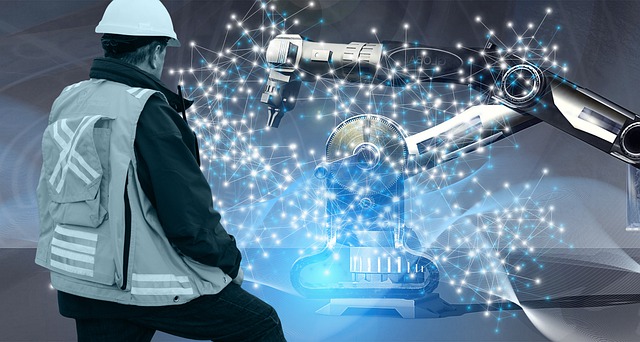The ever-evolving field of innovation is loaded with invigorating and imaginative career opportunities. The AI Engineer is a fast-developing career prospect with many opportunities for professional development. Learn more about AI and its subsets in this blog: What is AI?
Similarly, while AI Engineering is a relatively new field, it is becoming more and more relevant in many economic sectors, especially in the industrial and manufacturing industries. Not only that, but AI Engineering is also becoming relevant in healthcare, security, finances, and entertainment.
If you want to know more about why AI Engineering is important today, check out this article: What is AI Engineering and Why Should You Be One.
Some of the most interesting and meaningful applications of AI are in engineering and more and more people are entering the field.
Roles and Responsibilities of an AI Engineer
In fact, AI Engineers are responsible for using programming algorithms so they can assemble, test, and convey AI models. Likewise, AI Engineers are problem-solvers; it is their responsibility to ensure that AI systems or infrastructures are properly implemented.
AI Engineers build, deploy and maintain AI-based systems. Working closely with businesses and tech companies, AI Engineers help improve company operations, enhance products or software development, and make proper service delivery, among others.
Furthermore, if you want to learn more about the technical skills required to become an AI Engineer, check out this article, Skills Required to Become an AI Engineer.
Similarly, AI Engineers are primarily responsible for implementing Machine Learning (ML), a process that involves the application of Artificial Intelligence to automatically perform a specific task without explicitly programming it.
Other obligations include:
- Creating and managing the AI development process and the overall infrastructure of the product
- Directing factual investigation and deciphering outcomes so that they can guide the organization’s decision-making process
- Mechanizing framework for the data science team
- Creating foundations for information change and ingestion
- Building AI models
- Explaining their AI models to stakeholders
- Changing the AI models into APIs different applications can communicate with
In addition, aside from the responsibilities above, the core responsibility and duty of an AI Engineer is to navigate through the AI Framework. For the most part, AI Engineers focus on learning how to build and deploy AI models. However, the most essential skill to master is the complete understanding of AI/ML workflow. This workflow system includes-
- Data Preparation
- AI Modeling
- Simulation
- Testing and Deployment
The AI-Driven Workflow
Correspondingly, as an AI Engineer, you need to know that AI is not just modeling, but also a series of steps: data preparation, modeling, simulation and test, and deployment.
Step 1: Data Preparation
Firstly, Data preparation is the process of feeding accurate data as input to train a model. If engineers do not provide accurate data, projects are more likely to fail, and engineers will not get accurate or helpful results. To train a model, AI Engineers should begin with large amounts of clean, labeled data. This is also one of the most time-consuming steps of the workflow.
An AI model is likely to fail without accurate training data. AI Engineers should know data classification procedures, the clustering process, the task of regression, human insights, data cleansing activities, and discretion proceedings.
Step 2: AI Modeling
Secondly, after cleaning the data and properly labeling it, comes AI modeling. This is where data is used as input, and the model learns from that data. The goal is to create an accurate model that can make intelligent decisions based on data. This is also where Deep Learning, Machine Learning, or a combination thereof comes in.
AI Engineers must learn how to create accurate models that can make decisions based on data. For this, AI Engineers would use the concepts of Deep Learning (Neural Networks), and Machine Learning (Decision Trees).
Step 3: Simulation
The model does not exist in a vacuum and must work with all other pieces in the system. Let us take an example of an automated driving scenario. Not only does the self-driving car have a perception system for detecting objects (cars, pedestrians, stop signs), but the vehicle’s perception also has to integrate with other systems for path planning, localization, controls, and more.
The key to a successful model is proper simulation and testing. Indeed, it is only when an AI model passes the simulation and testing phase that it is deployed into the real world.
Step 4: Deployment
The final step is Deployment. Engineers need to master making an implementation-ready model that can be fitted into a designated hardware environment. Accordingly, once the model is ready to deploy, the next step is the target hardware. In other words, deployment is the step in which the AI Engineer readys the model in the final language in which it will be implemented. In this step, the design engineers share an implementation-ready model which fits into the designated hardware environment. The designated hardware environment can range from desktops to the cloud to FPGAs.
Conclusion
The Fuse.ai center is an AI research and training center that offers blended AI courses through its proprietary Fuse.ai platform. The proprietary curriculum includes courses in Machine Learning, Deep Learning, Natural Language Processing, and Computer Vision. Certifications like these will help engineers become leading AI industry experts, and also aid them in achieving a fulfilling and ever-growing career in the field.

